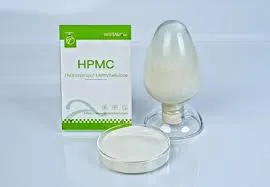
Nov . 14, 2024 12:25 Back to list
hydroxyethyl cellulose solubility in ethanol
Hydroxyethyl Cellulose Solubility in Ethanol An Overview
Hydroxyethyl cellulose (HEC) is a water-soluble, non-ionic polymer derived from cellulose, a natural polymer abundant in plants. HEC is widely used in various industries, including pharmaceuticals, cosmetics, food, and construction, due to its excellent thickening, stabilizing, and film-forming properties. Understanding the solubility of HEC in different solvents, especially ethanol, is crucial for optimizing its applications.
The solubility of HEC in ethanol is a topic of significant interest. Ethanol, a common solvent, has unique properties that influence the dissolution behavior of various polymers. Generally, HEC exhibits limited solubility in ethanol compared to water. This limited solubility is primarily attributed to the polarity and hydrogen-bonding capabilities of both the polymer and the solvent. Ethanol, being a less polar solvent than water, cannot effectively disrupt the hydrogen bonding present in the HEC structure.
However, HEC can be partially solubilized in ethanol under certain conditions. For instance, the degree of substitution (DS) of HEC plays a crucial role in determining its solubility profile. Higher DS typically results in increased hydrophilicity, which can enhance solubility in aqueous environments but may not significantly improve solubility in organic solvents like ethanol. The molecular weight of HEC is another important factor. Lower molecular weight HEC can dissolve more readily in ethanol than its higher molecular weight counterparts due to decreased entanglements and improved mobility of polymer chains.
hydroxyethyl cellulose solubility in ethanol

In practical applications, the solubility of HEC in ethanol is vital for formulating products where ethanol is a solvent component. For instance, in cosmetics, HEC is often used as a thickener and stabilizer in formulations containing alcohol. The effective use of HEC in such products relies on its ability to interact with other ingredients, influencing the overall texture, viscosity, and stability.
Furthermore, the miscibility of ethanol with water can also affect the performance of HEC in formulations. When mixed with water, ethanol can enhance the solubility of HEC by creating a solvent environment that better accommodates the polymer's hydrophilic regions.
In summary, while hydroxyethyl cellulose has limited solubility in ethanol, its degree of substitution and molecular weight play critical roles in determining this behavior. Understanding these factors allows for better formulation strategies in industries utilizing HEC, paving the way for innovative products that meet increasing consumer demands.
-
Versatile Hpmc Uses in Different Industries
NewsJun.19,2025
-
Redispersible Powder's Role in Enhancing Durability of Construction Products
NewsJun.19,2025
-
Hydroxyethyl Cellulose Applications Driving Green Industrial Processes
NewsJun.19,2025
-
Exploring Different Redispersible Polymer Powder
NewsJun.19,2025
-
Choosing the Right Mortar Bonding Agent
NewsJun.19,2025
-
Applications and Significance of China Hpmc in Modern Industries
NewsJun.19,2025







